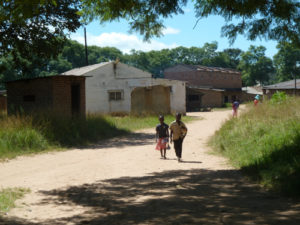 The book fills an important gap in the literature, as it offers a nuanced account of the history of farm workers’ rights, as well as a reflection on changing fortunes since 2000. The ‘ordered estates’ of the colonial era have been much described. Blair Rutherford’s classic work from Karoi/Hurungwe told this story well, describing the constrained ‘domestic government’ that disciplined and controlled in the narrow, paternalistic world of white farms. Post-independence this reformed somewhat, and the limited sovereignties of the farms were extended as the state insisted on labour laws and other regulations, and NGOs took up the plight of farmworkers, creating new, more technical-bureaucratic, ‘practices of rule’.
The book fills an important gap in the literature, as it offers a nuanced account of the history of farm workers’ rights, as well as a reflection on changing fortunes since 2000. The ‘ordered estates’ of the colonial era have been much described. Blair Rutherford’s classic work from Karoi/Hurungwe told this story well, describing the constrained ‘domestic government’ that disciplined and controlled in the narrow, paternalistic world of white farms. Post-independence this reformed somewhat, and the limited sovereignties of the farms were extended as the state insisted on labour laws and other regulations, and NGOs took up the plight of farmworkers, creating new, more technical-bureaucratic, ‘practices of rule’.
This book deepens this analysis, particularly with a focus on ‘farmers’ wives’ and their role in welfare organisations – hence the reference to ‘maternalism’ in the title. It also shows of course that there was not one single approach to labour in white farming areas; not surprisingly all farms were different, depending on characters and contexts. The post-independence developmental attempts to modernise, civilise and improve resulted in a range of initiatives on the farms from schooling programmes to orphanages, often with heavy involvement of ‘farmers’ wives’. But by ‘rendering technical’ the inequalities of land and labour regimes, such welfare efforts did not address the underlying challenges, and welfare was more sticking plaster rather than fundamental reform. Following land reform in 2000, such NGOs have not found a new role, focusing on displacement, but not on the new lives and livelihoods of their former ‘beneficiaries’.
However, it is in the examination of the post-land reform period that this book cuts new ground. Building on, but also critiquing (as with some other recent literature somewhat gratuitously and inaccurately in my view), the important work of Walter Chambati, Sam Moyo and others, the book paints a detailed ethnographic picture of how farm workers carve out new opportunities in an highly challenging economic, social and political environment. This is the period of ‘crooked times’, where a ‘zig-zag’ approach to the kukiya-kiya economy is vital to survive. This is the world where there are no standard jobs – in the form of regular wage work – and where entrepreneurial informality emerges, with new forms of distribution, dependence and personhood, as James Ferguson describes for South Africa. Whether in the case of the Harare peri-urban settlement described in Chapter 5 (discussed previously in this blog) or the biographies of former farm workers profiled in Chapter 7, mixing new farm work with urban living, the new precarities of life in the post land reform age are well described. New ‘modes of belonging’ must be generated, very different to the ordered safety, if extreme exploitation, of what went before.
What was missing from the book I felt was more detailed information who moved to what new occupations and where they ended up to provide the bigger-picture context to make sense of the fascinating detail. The book acknowledges the problems with the existing statistics, quoting both the CFU and other sources, and (somewhat bizarrely) just takes an average number, as a ‘middle way’. Getting a national picture may be impossible, but it would have been good to know what happened on those on the farms studied, and get a sense of how outcomes for farm workers were differentiated and why, in order to locate the few, if fascinating, individual cases.
There are hints though at wider patterns. Those few white farms that have persisted have often maintained a network of loyal farm workers, some who provide protection and support through their links, and the book offered an interesting case of this dynamic in Chapter 7. At various points, the book suggests (I think very accurately) that turnover on A2 farms was particularly damaging to farmworkers, as production collapsed and some A2 farmers did not maintain their operations. But it also suggests that ‘successful’ A2 farms nearby took on workers, and so there is often a regional labour economy that is important to understand on the new farms. The book did not however get into any detail on what happened post land reform to groups of farmworkers in farm labour compounds, and especially on the A1 farms (after all the largest areas), as we have been trying to do in Mvurwi. It therefore missed out on the dynamic described in the blogs over the last two weeks, of farmworkers becoming farmers – along with much else – in the new ‘crooked times’ of the last 16 years.
Despite shortcomings (this was after all a single researcher doing a research degree, so no blame there), this is a most valuable contribution, and coming from a white Zimbabwean (as he admits not from a farming background) perhaps especially powerful. When you next hear misinformed statements about Zimbabwe’s former farmworkers, please turn to this book for an informed, nuanced account that sets an important agenda for future research and policy debate.
This post was written by Ian Scoones and appeared on Zimbabweland
Post published in: Agriculture

